Our robotic sky
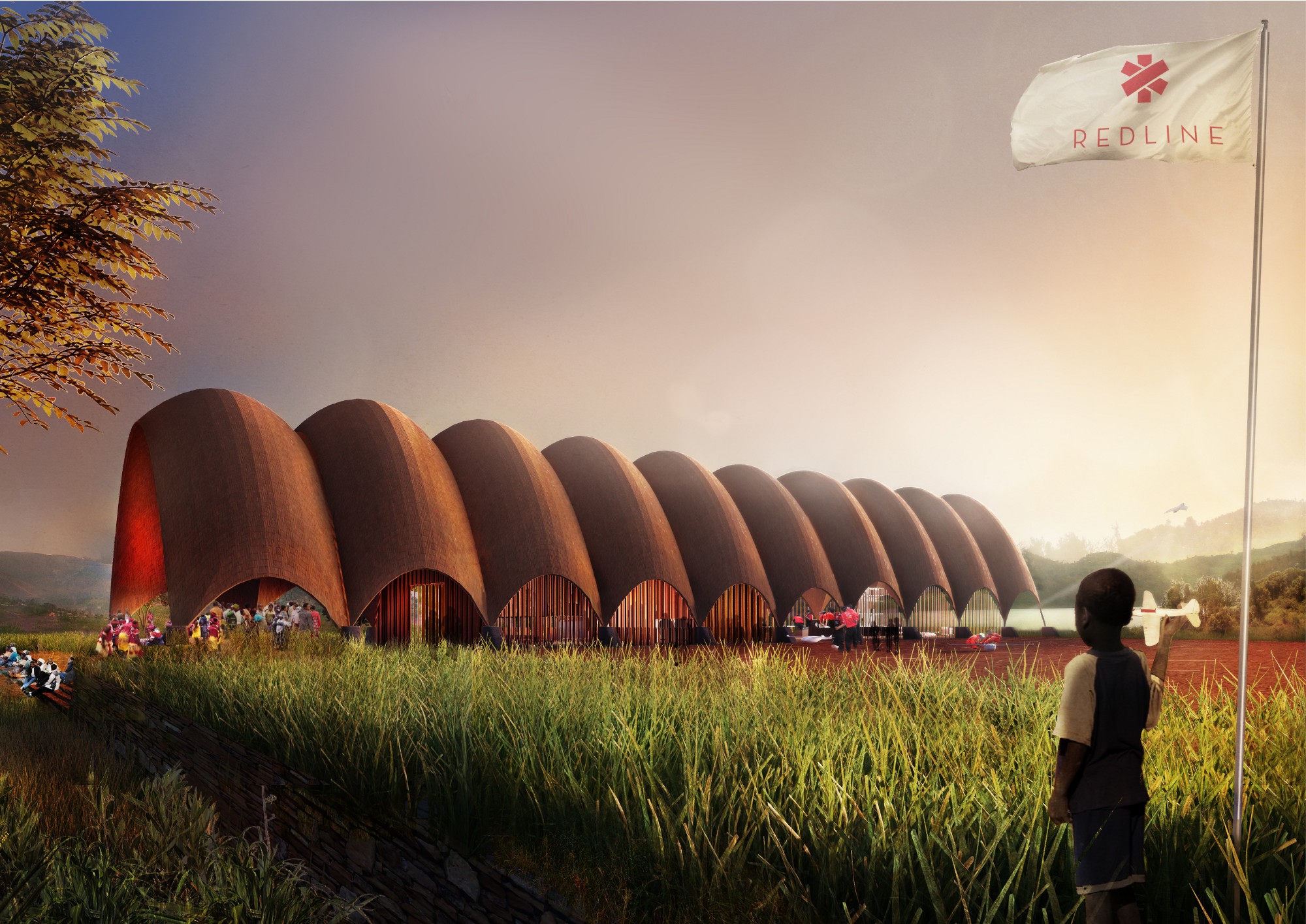
We think that humankind is able to build safe routes for cargo drones between dronoports across the planet. Silent, beautiful, similar to the giant geese drones will take off from the dronoports and deliver valuable cargo across the sky. They will save lives and create new jobs. Below we present the first concept of a dronoport that we would like to build in Rwanda. Dronoport will spend about the same amount of money as on the construction of one gas station.
J.M. Ledgard (JM Ledgard)
I am a writer , but for most of my life I worked as a foreign correspondent for The Economist. For the past ten years I have been covering events in Africa in a magazine. One day, after reporting on the mobile revolution on the black continent, I realized how modern technology could improve the lives of the poorest people on the planet. After quitting the Economist, I launched my own project at EPFL (Lausanne Federal Polytechnic School) - the European equivalent of the California Institute of Technology - and thought about the problem of fighting poverty through technology at a completely different level. I am confident that robotics will become the most powerful and fastest growing direction in Africa. This conclusion led me to the idea of creating flying robots that will cruise along specified routes along the black continent. I’m not talking about small, insect-like drones, but about large and reliable machines that can fly more than one mile. I gathered a group of enthusiasts and opened the Redline project, which aims to create the world's first route for cargo drones in Africa. This will help to rapidly increase capital, thanks to quick and not expensive access to scarce goods and services.
I believe that the project is a success, because:
- On an overpopulated planet with limited resources, we will inevitably come to the necessity of transporting goods with the help of flying robots. Heaven will be used more often because it is the way to deliver goods faster and more reliably.
- Delivery of goods by air, maintenance of robots and their places of permanent deployment does not necessarily be affordable for everyone. Probably the poorest countries that would get the most benefits will not be able to afford drones.
- Africa needs help. By 2050, the population of the continent will double to 2.2 billion people. Such a sharp population growth, together with the destruction of flora and fauna, droughts, soil erosion, the lack of a building base, mass unemployment and the closure of Europe for refugees and displaced people, will lead to lower economic growth and increased risks.
- That is why in Africa, as well as in some other developing countries, it is necessary to focus on the so-called exchange economy, the meaning of which is the fastest and most efficient transportation of goods and services. The rapid development of new technologies can lead to this paradox: a family can have its own robot, but not have running water in the house.
- By building cargo drones at the price of a motorcycle and dronoports at the price of a gas station, we can improve the quality of medical care for the local population and bring the region’s economic prospects to a new level.
- Cargo drones have the most prospects in regions where there are no roads. It is not only about Africa, but also about remote parts of developed countries, such as the Highlands, Quebec and Siberia.
- Creating routes for cargo drones only makes sense if there is a need to fly often (for example: 20+ departures per day for a city with a population of 20,000). Routes should function in the sky in the same way as railways on the ground, that is, spectrally.
- Cargo drones are not intended to replace, but only complement traditional modes of transport. They can never become a full replacement for highways and railways. However, they will create opportunities for the rapid and efficient transfer of valuable goods through mountain ranges, lakes and rivers.
Norman, you built the largest airport in the world. How about the smallest?
Lord Norman Foster (Lord Norman Foster)
Dronoport - the place where the earth touches the sky - will be the most important element of the cargo drones route. Nobody knows how to build such buildings. I, however, had this opportunity, and that is why I support the project Redline. Dronoport will be the first project of the Norman Foster Foundation (The Norman Foster Foundation). One day, Jonathan approached me and said: “Norman, you built the largest airport in the world. How about the smallest? ”The most interesting thing is that in ten years the area of all the dronoports built in Africa will be larger than the area of the largest airport in the world.
Dronoports will be built according to the principle of Buckminster Fuller - to do as much as possible with less effort - and will have the shape of a geodesic dome. This form was recognized as ideal by the results of a study conducted in remote African settlements by Narinder Nagoo, a partner of the company that oversees the project. In addition, the data was borrowed from two other projects: Exploration of the Moon 2012 for the European Space Agency, which explored the possibilities of robotic construction from the lunar regolith; Narinder Nagu school project in Sierra Leone, which explored the use of local materials for typical construction using manual methods.
')
Redline's dronoports should be affordable, affordable, and use clean energy. In addition, they should be visible, a kind of attraction centers for local residents, in which they can receive and send goods and packages, order goods online, get medicines and treatment. Of course, dronoports will produce and repair drones.
It is assumed that the dronoports will save lives, and will also become important centers for the development of local economies. Fast and cheap delivery of goods with the help of robotic drones across mountains, lakes and rivers will be a good impetus for growth.
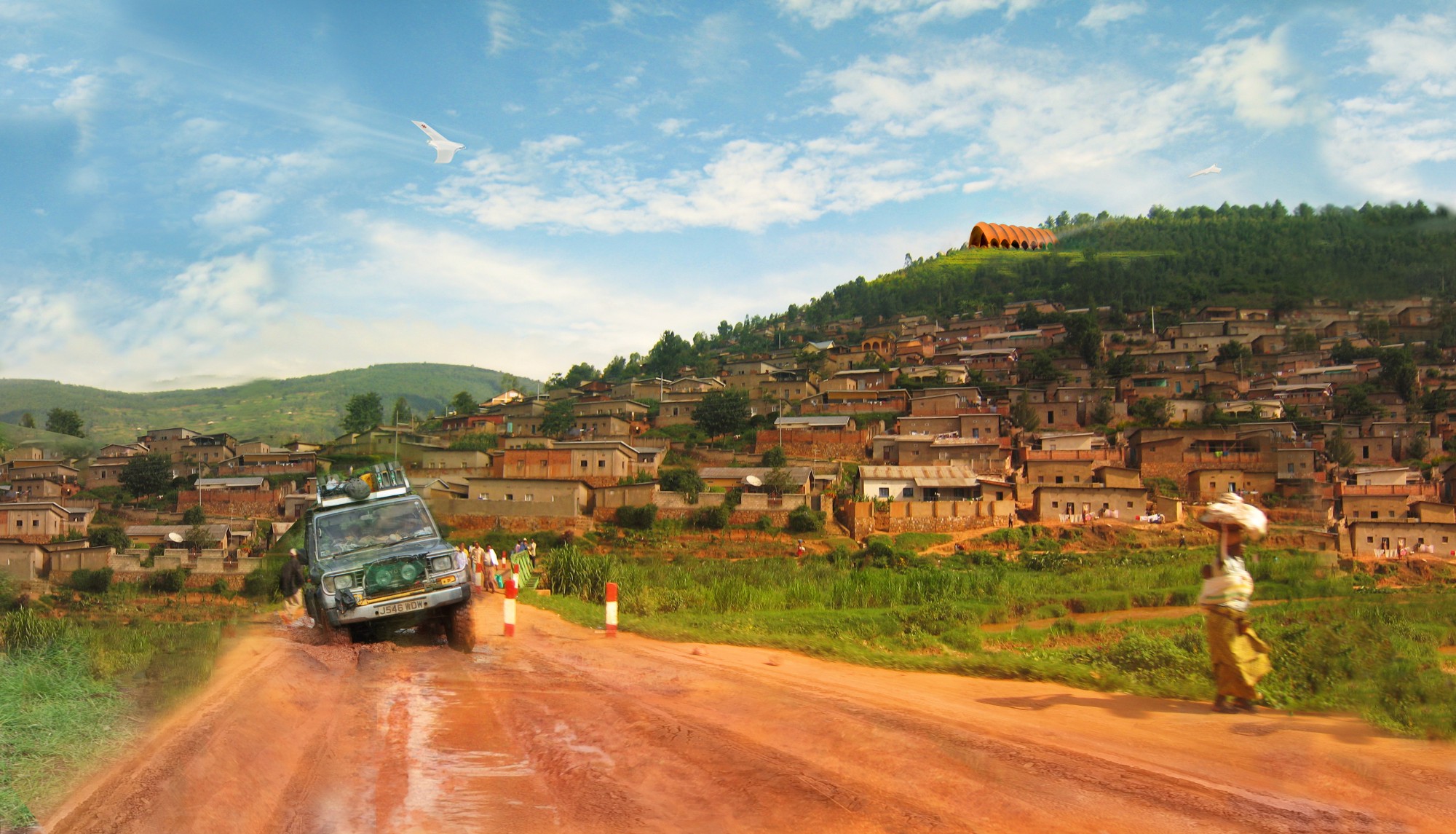
Drones can never replace conventional vehicles. Rather, they will become an additional form of transport of the 21st century.
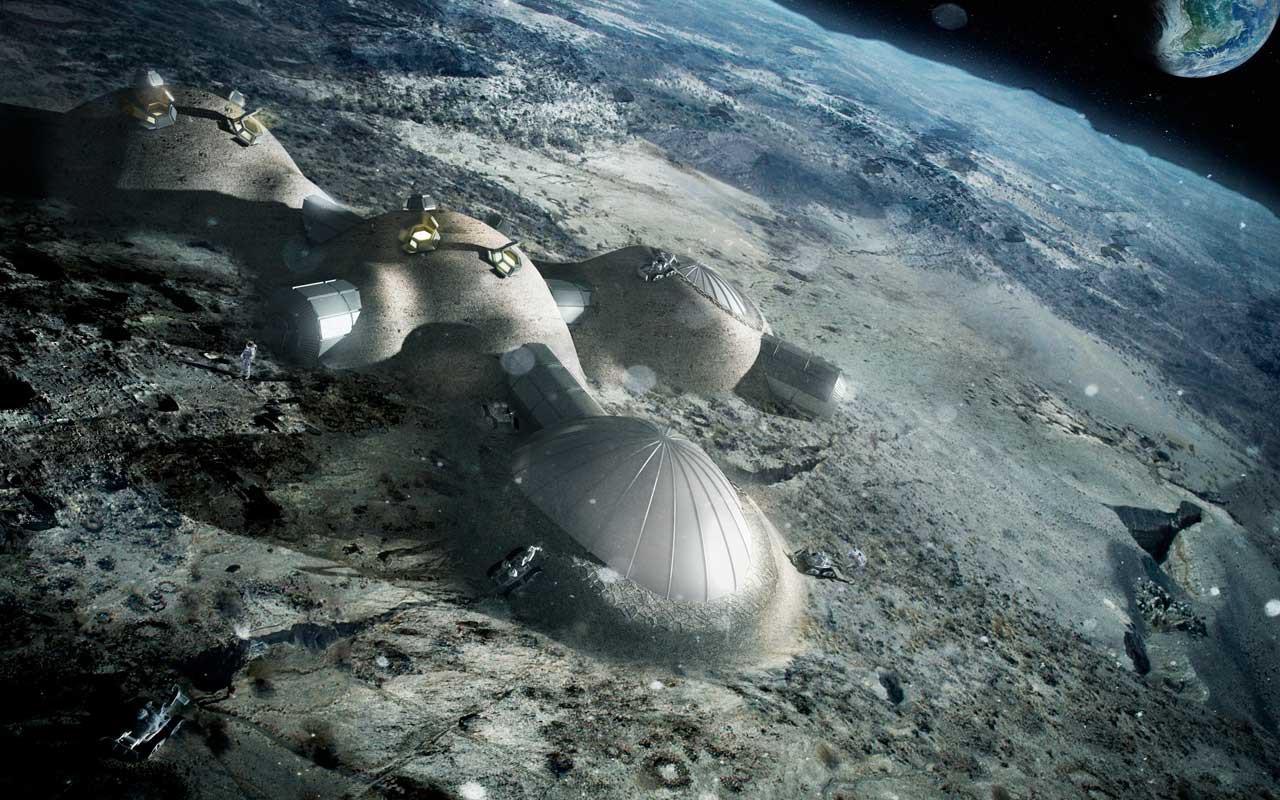
The construction of lunar modules and dronoports largely relies on the maximum possible use of local materials.
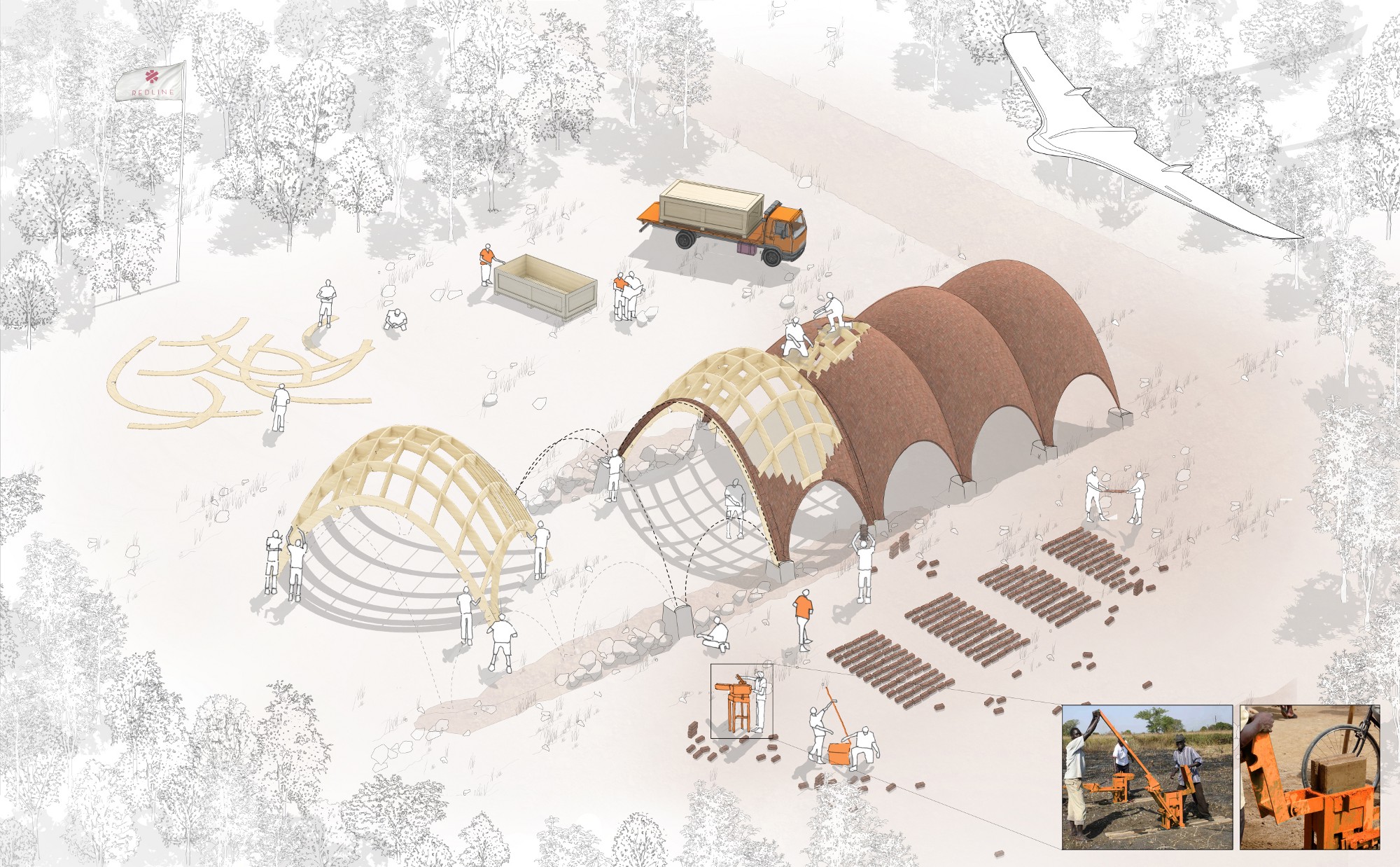
The only difference is that in Africa you have to work with the locals, when you have to rely on robots like on the moon. The point is to get the maximum result with a minimum amount of effort. Drones that emerged as technology for the military will save lives, not kill.

Redline Dronoports will serve as a first aid station. Medicines and food will be delivered directly to the dronoport. So we can save people and stimulate growth.
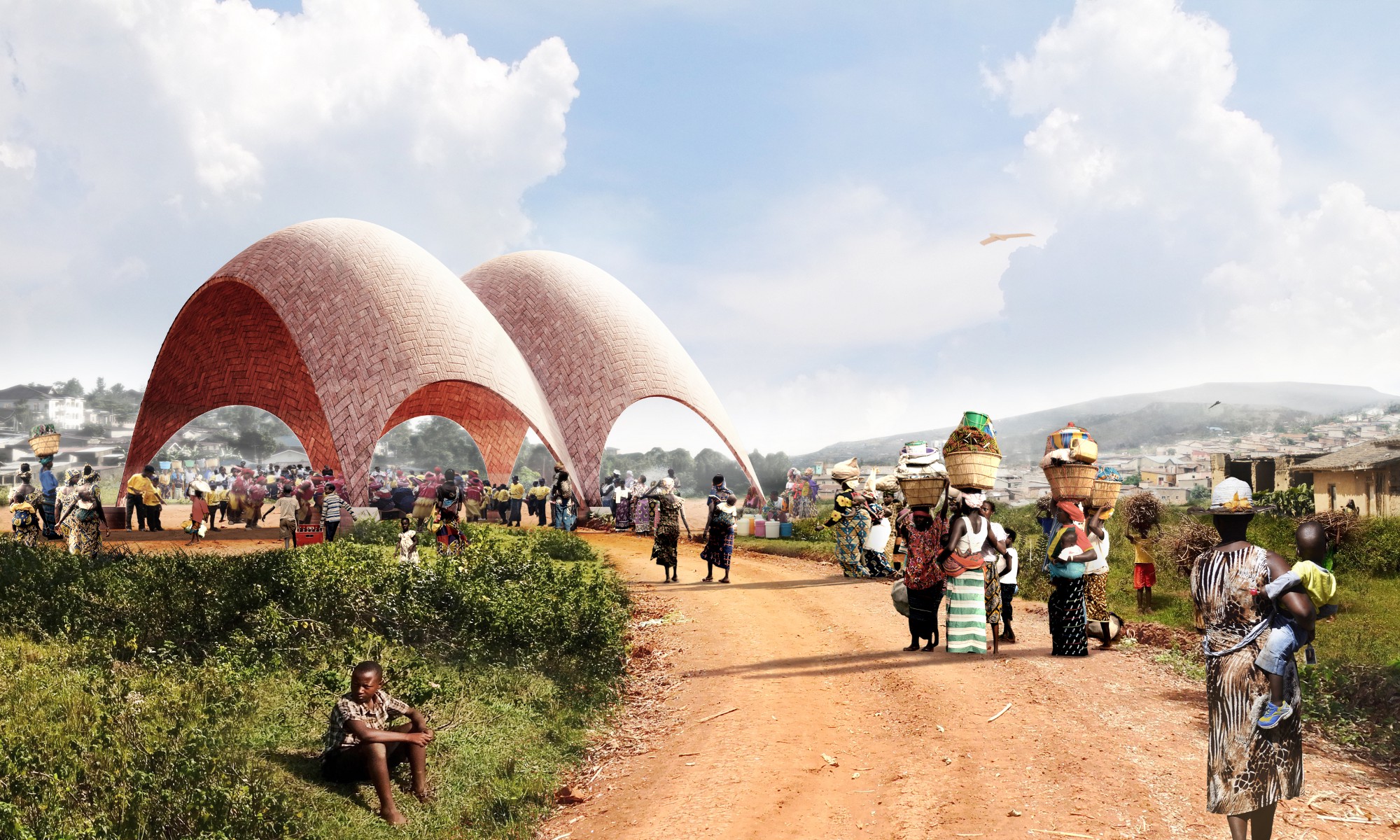
Dronoport will also be a public building, a center of attraction for local communities. There will be mail and online store, and everything you need to repair electronics. Important social decisions will also be made here. The size of the dronoport depends on the number of inhabitants of the community.
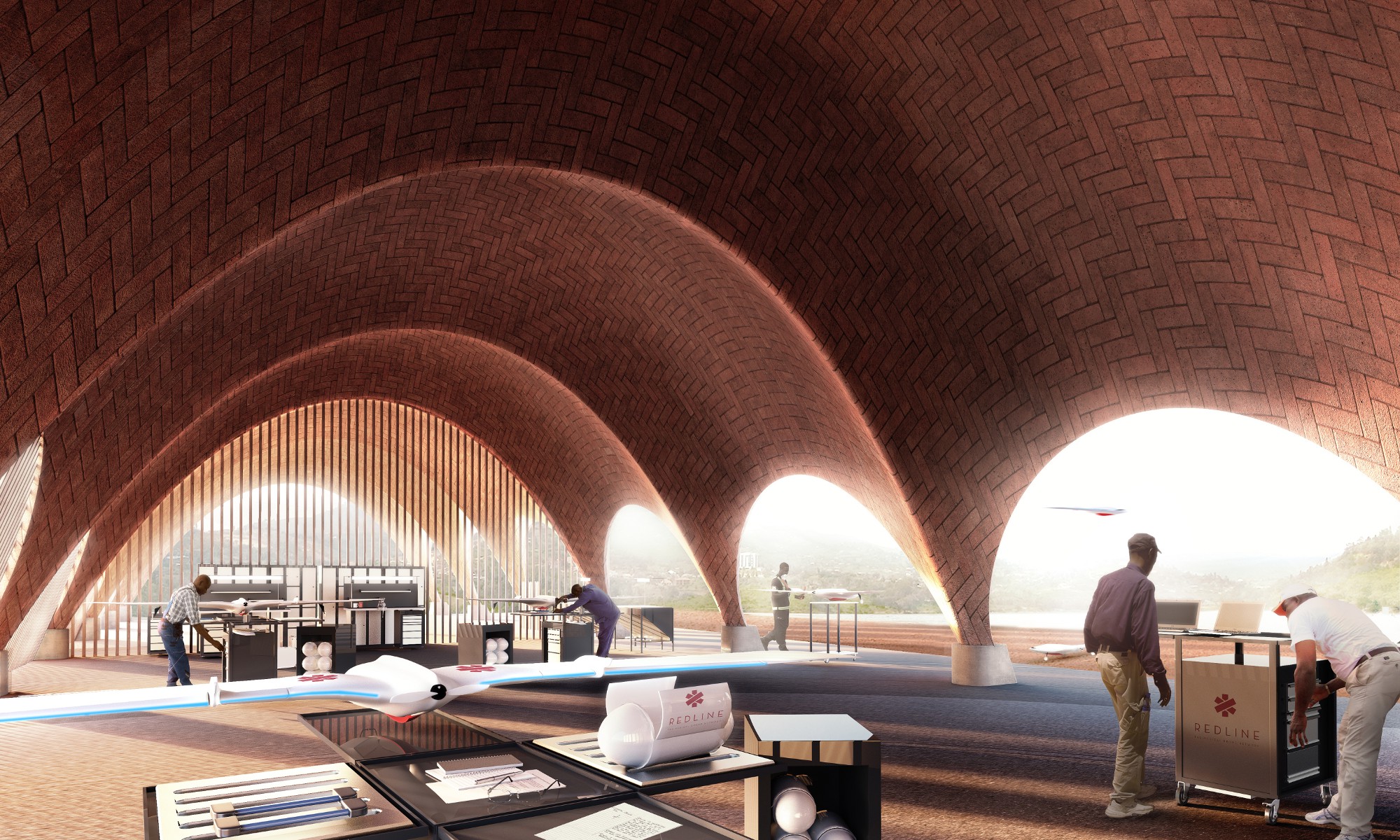
The main component of the dronoport will be a hangar with modern drones. Redline drones will be equipped with navigation systems for route optimization, biomematics , safety and landing systems, and modern energy-saving systems. In the manufacture of drones will be used the most advanced materials.

Using drones will pay off and make sense only if each drone delivers a 10-kilogram load over a distance of 100 kilometers several times faster, but as cheap as an ordinary motorcycle.
Read about how J. M. Ledgard came to the idea of transporting goods with the help of flying drones, here .
Translation prepared by: greebn9k (Sergey Gribnyak), silmarilion (Andrey Khakharev)
Source: https://habr.com/ru/post/368625/
All Articles